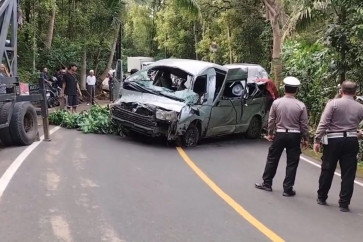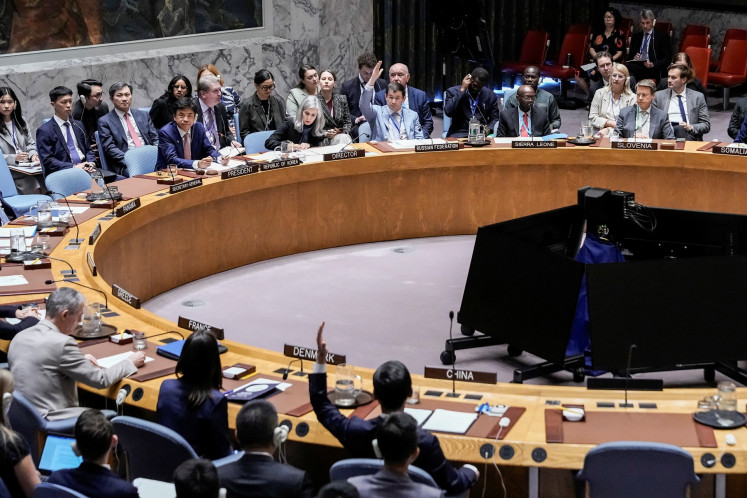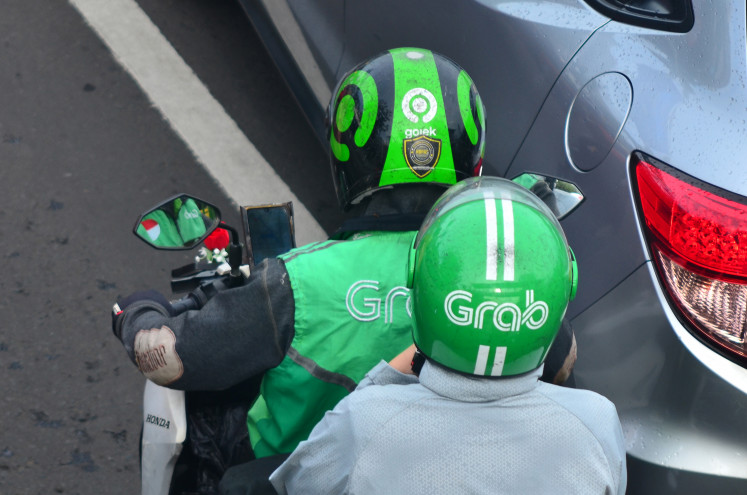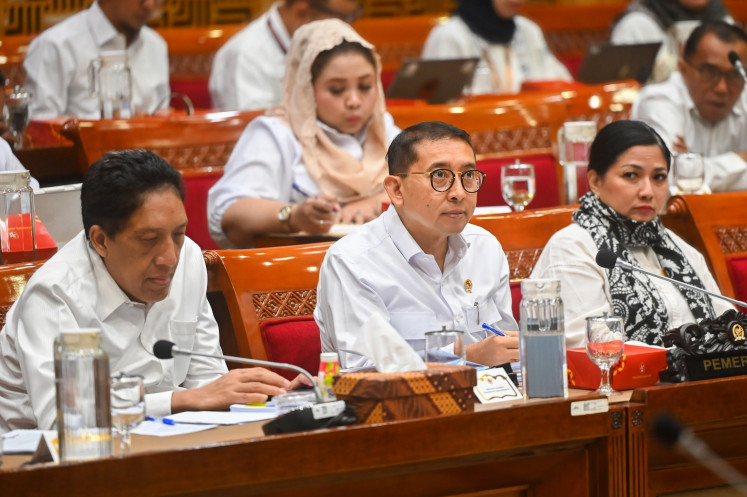Popular Reads
Top Results
Can't find what you're looking for?
View all search resultsPopular Reads
Top Results
Can't find what you're looking for?
View all search resultsJakarta to have modern waste plant
The Jakarta administration finally signed a memorandum of understanding with the Tangerang Regency Friday — after more than a decade of stalemate — to develop a 98-hectare plot in Ciangir, Tangerang, into a state-of-the-art waste treatment plant
Change text size
Gift Premium Articles
to Anyone
T
he Jakarta administration finally signed a memorandum of understanding with the Tangerang Regency Friday — after more than a decade of stalemate — to develop a 98-hectare plot in Ciangir, Tangerang, into a state-of-the-art waste treatment plant.
Jakarta Governor Fauzi Bowo and Tangerang Regent Ismet Iskandar signed the document Friday after years of refusal from Tangerang residents. The assurance that the plant would be environmentally friendly and produce zero waste eventually softened residents’ hearts.
Ismet promised the waste treatment process would cause no harm to the locals and the envi-
ronment thanks to sophisticated technology.
“No garbage will remain as the technology helps avoid polluting the water and the land in the premises.”
Herry Heryanto, head of Tangerang ’s sanitation and parks agency said Ciangir’s waste management system combines anaerobic digester with landfill gas to energy technologies and will result in zero waste.
Meanwhile, Jakarta Sanitation Agency head Eko Bharuna said the plant would transform gas from waste into energy and produce waste brick fuels.
“We actually bought the land long time ago in 1998, but the public needed some time to be persuaded,” said Eko.
The Jakarta administration will start the tender process for the Ciangir dumpster worth Rp 700 billion (US$70 million) in November.
The dumpster is scheduled to operate in 2010.
Fifty hectares of the land will be developed to manage 2,500 tons of waste per day, with 1.500 tons from Jakarta and 1,000 tons from Tangerang.
The rest of the land will be open green space with trees as a buffer zone from residential areas.
Jakarta produces around 6,400 tons of waste per day.
Eko said plastic and organic waste would be separated. The organic waste will be put into underground bunkers that will transform methane gases into energy.
“This is part of the Clean Development Mechanism [CDM].”
CDM is a mechanism under the Kyoto Protocol, which allows industrialize countries with greenhouse gas reduction commitment to invest in projects that reduce emissions in developing countries.
He said that residue from that would be made into waste brick fuels.
“The brick fuels would be given to the communities there, who could sell them. This is also a way to empower the people.”
Ismet said Tangerang would prepare traffic routes recommended for Jakarta and Tangerang trucks heading to the joint waste treatment plants in the near future.
Eko said with the future development of Ciangir, the city’s masterplan for waste management would be fulfilled.
“The city’s waste management was planned to be handled per area. In the east, we have Bantar Gebang. Now, with Ciangir, we can have two points, East and West.”
Eko said his agency would not include a cleaning fleet in Ciangir’s development plans. The agency would instead outsource the work.










